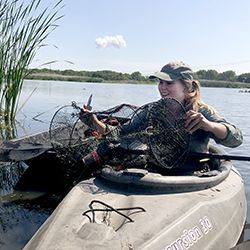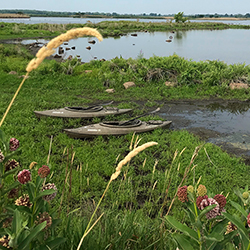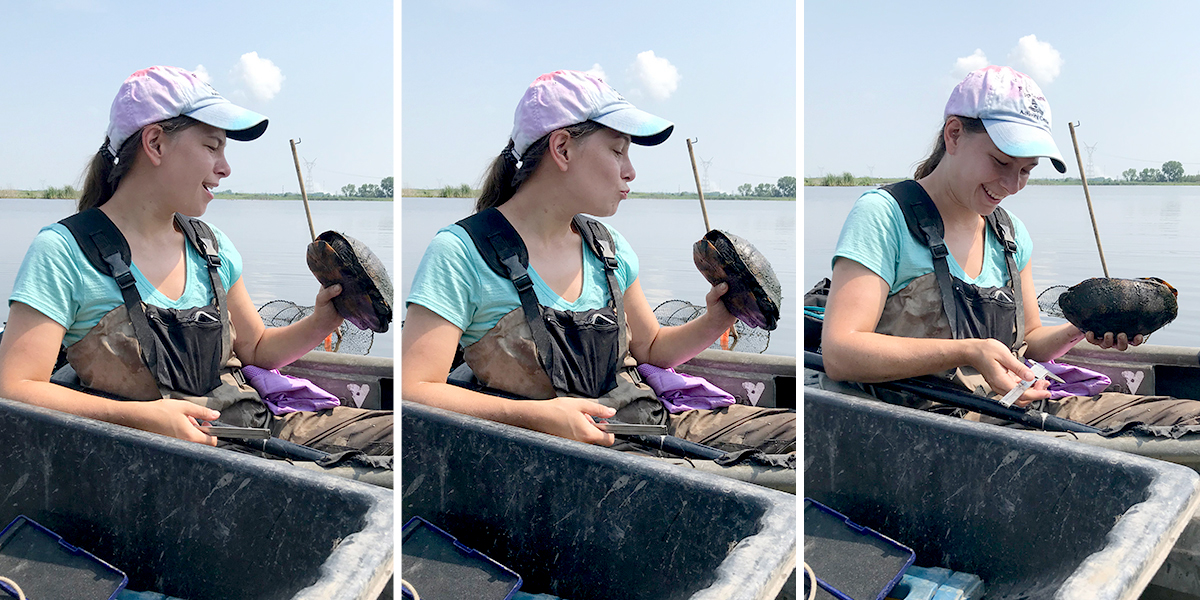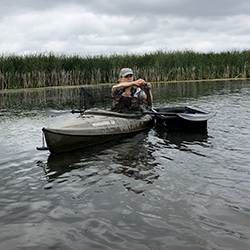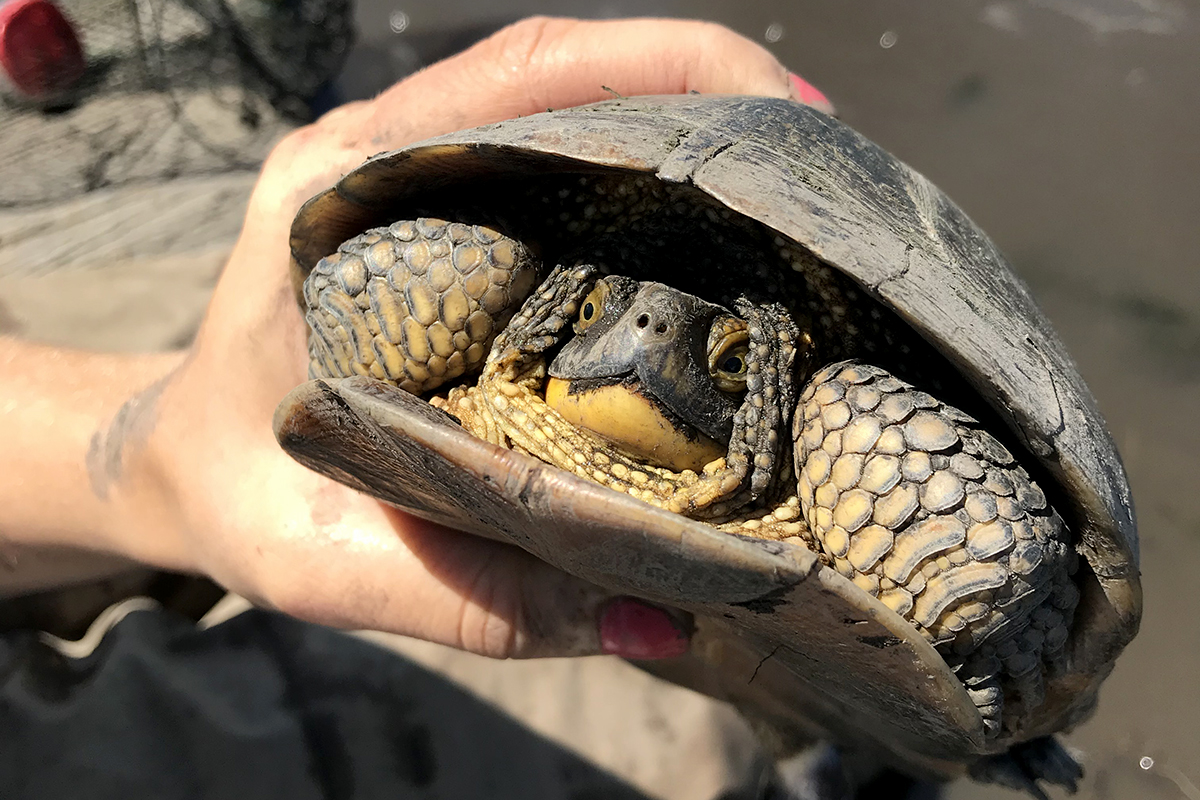
Blanding's turtles are endangered in Illinois.
Photo by Andrea Colton and Emily Sunnucks
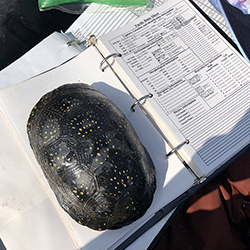
The team marks and records size and weight data on each turtle captured in the traps.
Photo by Andrea Colton and Emily Sunnucks
MORRIS, Ill. – We are never more conscious of the summer sun than while struggling to unpack a trap full of turtles, watching with resignation as the wind slowly drags us and our kayak across the marsh. We are in Goose Lake Prairie State Natural Area, about 50 miles southwest of Chicago. We visit these wetlands two weeks per month during the field season, which runs from May to October.
One by one, we wrestle each muddy, squirming turtle out of our minnow trap. We use a small saw to carve notches into their shells. These markings don't hurt the turtles but allow us to keep track of how many are making repeat visits to our traps. Once we've marked them, we measure their shells and weigh them.
We methodically process 10 painted turtles – a common species in this marsh – then turn our attention to the two turtles we're most excited to see. These are Blanding's turtles, easily recognized by their bright-yellow necks and speckled shells. Unfortunately, they are endangered in Illinois. Neither of these two has been marked before, so we know we can add them to the dwindling population total.
Once found in marshes across northern Illinois, Blanding's turtles now occupy only 22% of their original range. This decline is largely the result of extensive habitat loss and fragmentation as land is developed for agricultural and urban use. Blanding's are particularly vulnerable to habitat loss because they tend to use many habitat types and travel long distances.
As field technicians with the Illinois Natural History Survey, our goal is to learn as much as we can about them. Knowing how their population is structured and how many Blanding's turtles remain – in the context of the turtle community as a whole – will help in the development of viable conservation and recovery plans for them. Without efforts like ours guiding management decisions, Blanding's turtles likely would go extinct.
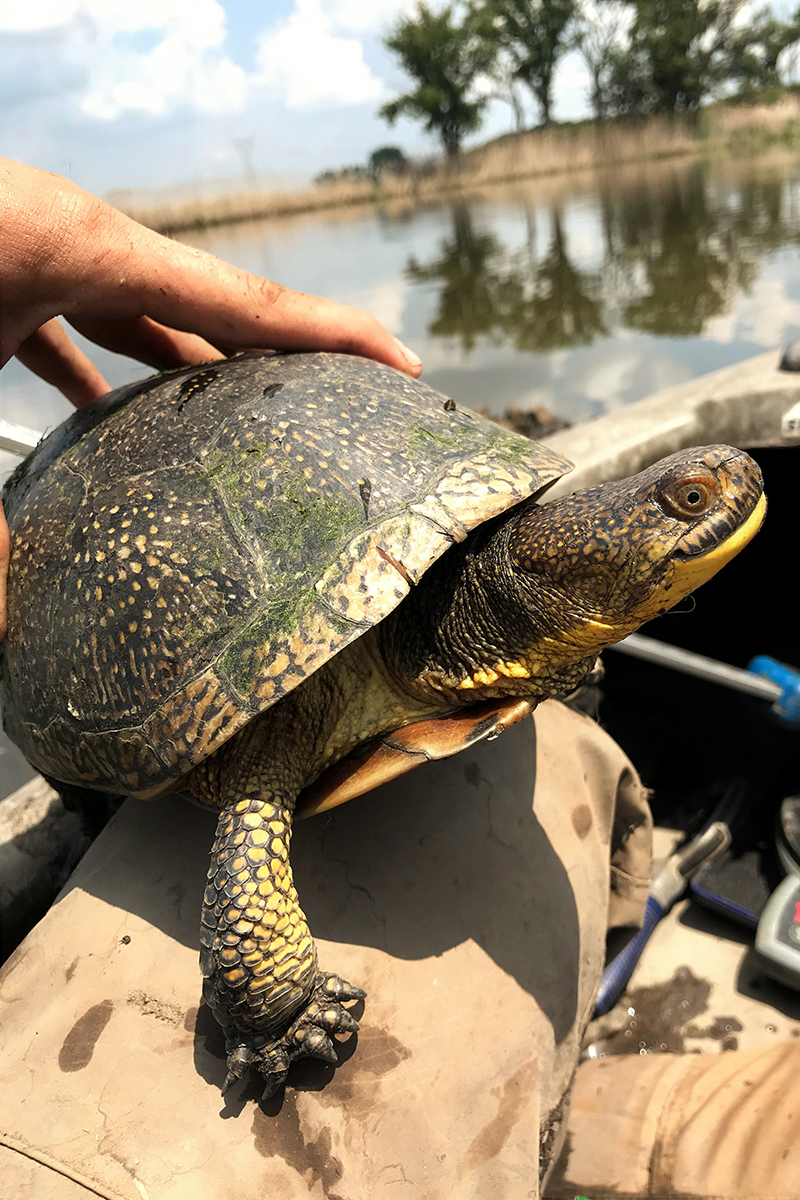
As a result of habitat loss and fragmentation, Blanding's turtles now occupy only 22% of their original range in Illinois.
Photo by Andrea Colton and Emily Sunnucks
Finding one of these rare turtles is enough to lift our spirits despite the heat. Anyone who has seen a Blanding's turtle knows the extent of their charisma. Their yellow eyes seem earnest as they watch us from deep in their shells, patiently waiting for us to finish our manhandling. We can't help but hope to save these turtles.
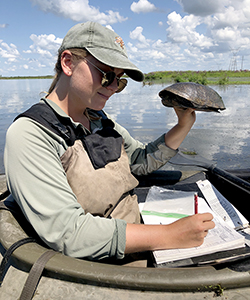
Andrea Colton records data on a Blanding's turtle captured in Goose Lake Prairie State Natural Area, about 50 miles southwest of Chicago.
Photos by Emily Sunnucks
We release the two Blanding's back into the water and watch them disappear into the submerged vegetation. Then we slowly kayak back to the shoreline to reset our trap, unsuccessfully avoiding the dripping residue from the sardines we use as bait. The traps are simple: a series of hoops connected by a net with openings at either end. We place the traps on the edges of the marsh near vegetation and basking sites – prime spots for turtles. The traps are only partially submerged to allow the turtles to breathe, and we visit the traps every day of each week of sampling.
We cover nearly two miles of shoreline, checking all 50 of our traps and struggling to prevent our makeshift worktable – a sled tied to our kayaks – from getting stuck on rocks and branches. We find no more turtles in the rest of the traps.
This is the reality of our work; it is variable and unpredictable. Some days we catch 10 turtles in one trap and other days we catch nothing at all. Sometimes a snapping turtle shoves its way into a trap, forcing us to spend a nerve-wracking 20 minutes working to release it. Some days we have to cut massive, flailing carp out of our traps. On other occasions, one of us flips a kayak into the shallow but muddy marsh waters. And some days, like today, we pull a trap out of the water and find a rare and beautiful creature that we hope to help survive.

